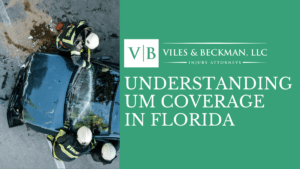
According to the Federal Motor Carrier Safety Administration (FMCSA), one third of accidents between heavy trucks and passenger vehicles occur in a truck’s blind spot. Responsible for regulating the trucking industry, the FMSCA created a public awareness initiative to alert all drivers about the dangers of blind spots, which they refer to as No-Zones. All vehicles have blind spots, but those on trucks are larger and drivers cannot glance over their shoulders to clear a blind spot like other motor vehicle drivers.
Truck drivers and trucking companies often want to blame other motorists for accidents that occur in a truck’s blind spot, but truckers can also cause an accident by not clearing their blind spots before they change lanes or turn. The large mass and weight of a truck make it far more likely for severe injuries and fatalities when accidents occur, making truck accidents among the most dangerous of all traffic collisions.
Learning about blind spots will help you safely share the road with large trucks by not causing a blind spot truck accident or falling victim to one when truckers make poor choices behind the wheel.
This guide provides more details about truck blind spots, causes of accidents that occur in blind spots, and information about injuries, liability, and lawsuits after suffering harm in a blind spot truck accident.
Locating a Truck’s Blind Spots
Sharing the road safely with trucks requires knowing where their blind spots are located. The exact size and location of blind spots differ with the size of a truck. Tractor-trailers, also called semi-trucks or 18-wheelers, have the largest blind spots. They are found in the following spaces around a truck:
- The driver’s side blind spot begins below the window and extends back towards the end of the trailer.
- The passenger side blind spot also starts below the window and extends back almost the entire length of the trailer across two lanes of traffic.
- The front blind spot extends forward from the cab about 20 feet.
- The rear blind spot begins at the trailer and extends back approximately 30 feet.
Blind spots get their name because drivers cannot see other vehicles or motorcycles in these spaces. With large blind spots, truck drivers especially have difficulty seeing other vehicles. Safe and experienced truck drivers take the time to clear their blind spots by accelerating or decelerating and using their side mirrors. Yet, even when they drive safely, accidents can still occur when truckers turn or change lanes.
Expect More, Receive More: Legal Support That Feels Like Family
Why Are Truck Blind Spots so Large?
As previously mentioned, all motor vehicles have blind spots, but the design of semi-trucks and other large trucks contributes to their size in comparison to smaller vehicles. Design elements that lead to large blind spots in trucks include:
- Trailer length. Together, the cab and trailer of a semi-truck are typically between 70 and 80 feet long. This creates a large area with little visibility that runs the length of the trailer on both sides. Although it’s rare, some tractor-trailers might have double or triple trailers. These trucks can be more than 100 feet and create massive blind spots for truck drivers.
- Cab height. Semi-trucks sit much higher than passenger vehicles, even pickup trucks and SUVs. When truckers are driving they struggle to see vehicles immediately next to them and in front of them, especially vehicles that sit really low.
- No rear-view mirrors. Heavy trucks, including semi-trucks, do not have rear-view mirrors to see vehicles immediately behind them. In cars, drivers glance over their shoulders to clear blind spots. Without rearview mirrors or the ability to glance out of the backseat window, truck blind spots are bigger.
How Do Blind Spot Truck Accidents Occur?
Truck accidents might happen for a variety of different reasons, but most are preventable. When blind spot accidents occur, they are broadly rooted in the same problem—the trucker didn’t see the vehicle and crashed his truck into it. More specific situations that can lead to a severe, sometimes fatal blind spot truck accident include:
- A passenger vehicle tailgates a semi and doesn’t have the space or time to stop when the driver has to turn, slow down, or stop.
- A truck driver tailgates another vehicle and cannot stop because trucks need double the time and distance to stop due to their weight.
- A trucker driver aggressively cuts off another vehicle or slams on the brakes.
- A motorist lingers in the “no-zones” when driving near large trucks. This is especially prominent on highways and interstates with two or more lanes. Truck drivers need to watch motorists drive through their blind spots; when this doesn’t happen they can easily run into a vehicle.
- A truck driver doesn’t clear his blind spots when making a wide turn or when changing lanes on a highway or interstate.
Blind Spot Truck Accident Injuries
A loaded tractor-trailer can weigh up to 80,000 pounds compared to passenger vehicles and SUVs which weigh between 3,500 and 5,500 pounds. When truck accidents occur, this weight makes them more likely to result in property damage, severe injuries, and fatalities. Blind spot collisions are even worse because they are more likely to lead to rollover collisions, sideswipes, and dangerous underride collisions. Those who are fortunate enough to live through a blind spot truck accident might experience one or more of the following injuries:
- Multiple crushed and broken bones
- Lacerations that might leave permanent scars
- Severe neck injuries that can include whiplash and fractured vertebrae
- Spinal cord injuries resulting in permanent or temporary paralysis in part or all of the body
- Back injuries resulting in lifetime chronic pain, even after surgery
- Head traumas that can lead to severe traumatic brain injuries, brain bleeds, and more
- Internal hemorrhaging and organ damage
- Crushed limbs that might need to be amputated
- Devastating burns from a car fire or explosion
Determining Liability in a Blind Spot Truck Accident
As a Florida resident you know Florida’s no-fault insurance laws require you to carry a minimum of $10,000 in personal injury protection (PIP) coverage if you have a registered vehicle. This means liability doesn’t immediately play a factor in an accident. Injured parties file a claim with their own PIP carrier regardless of who caused the accident; however, Florida’s PIP insurance covers 80 percent of medical treatment costs at best, and only 60 percent of an injured person’s lost wages. Severe truck accidents almost always rapidly meet or exceed minimum PIP limits, bringing liability into the picture. Additionally, PIP policies don’t consider the non-economic losses an injured party might have coped with in the aftermath of an accident.
Once determining liability comes into play, investigators and insurance adjusters will go the extra mile to determine fault. Truckers and their employers and insurance companies who hold their policies will maintain a blind spot truck accident was caused by the driver of the passenger vehicle. Lingering in a truck’s blind spot does increase the chances of a collision, but truckers also have the responsibility to clear their blind spots and check side mirrors before making any turns or lane changes. Depending on the circumstances, a Florida court might hold a truck driver fully liable for a blind spot collision with a passenger vehicle.
Seeking Compensation After a Blind Spot Truck Accident
If you or a loved one sustained injuries in a blind spot truck accident, Florida law permits to you sue for damages in civil court. If your attorney negotiates a settlement or the court rules in your favor during litigation, you might receive compensation for the following damages:
- Medical expenses beyond PIP coverage including hospitalization, surgery, emergency response, aftercare, diagnostic imaging, and medication
- Future medical expenses when a severe injury requires extensive recovery or causes a permanent condition or disability requiring long-term healthcare
- Rehabilitation expenses including visits to multiple specialists who help injury victims regain function and learn ways to cope with any permanent disability
- Lost wages as a result of missing work due to the accident, hospitalization, and recovery
- Future lost wages for those who cannot return to their job because of their injury or must reduce hours or change positions
- Physical pain and suffering
- Emotional pain and suffering
- Loss of quality of life
- Loss of consortium with a spouse
- Other applicable non-economic losses and damages
If you have lost a loved one in a blind spot truck collision, you might be eligible for compensation depending on your relationship with the deceased. Family members who file a wrongful death suit might receive some of the previously listed damages in addition to funeral costs, burial expenses, and non-economic costs specific to family relationships. A qualified Florida truck accident attorney can provide more information about what path is best for you and other surviving family.
Comparative Negligence in Florida Blind Spot Truck Accidents
Determining fault in truck accident cases can be simple in some cases, but it’s more challenging when blind spot accidents occur. Often, multiple drivers might share liability, or the trucker might share liability with their employer.
Insurance companies don’t stay in business by paying out every claim that comes their way, so you can rest assured they will do their best to avoid liability. The defense might use a variety of strategic arguments to convince the court you are partially or fully responsible for the truck accident.
Regardless of the strategies the defense tries to use to devalue your claim, a skilled truck accident attorney understands comparative negligence in Florida and knows how to apply them to help you pursue the best outcome for your case.
Get Legal Help After a Florida Truck Accident
An experienced Florida truck accident attorney understands the challenges you might face in the wake of a blind spot truck accident. Not only do you have to suffer the physical pain of injury and healing, but you also have to face the financial challenges that accompany a severe injury. You continue to amass medical bills, which can devastate your family if you contributed to household income before the accident.
Focus on recovering to the fullest extent possible and let a personal injury lawyer investigate and uncover relevant facts to support your case. This might include checking cell phone records, electronic or paper logbooks for the semi, speaking to eyewitnesses, and gathering relevant documents like medical records and a crash report. A lawyer can also handle communications with any insurance companies so they take you seriously. This also maximizes your chances of receiving full and fair compensation for injuries you suffered as a result of a blind spot truck accident.






